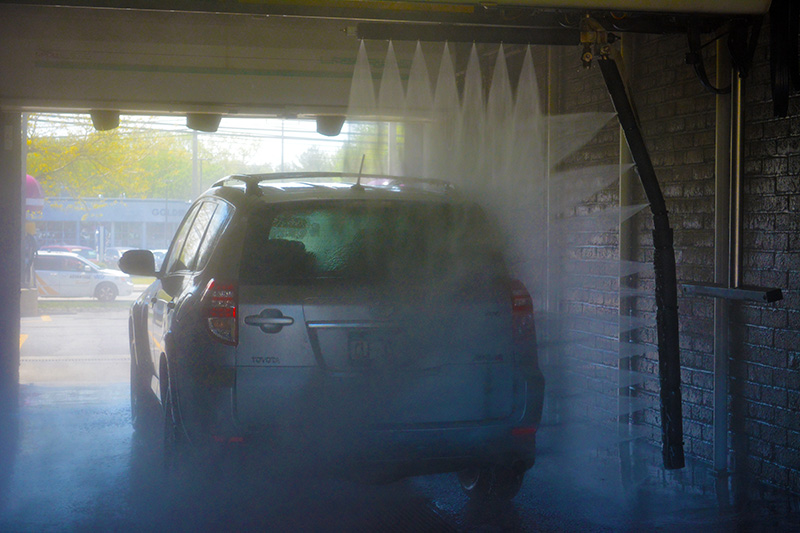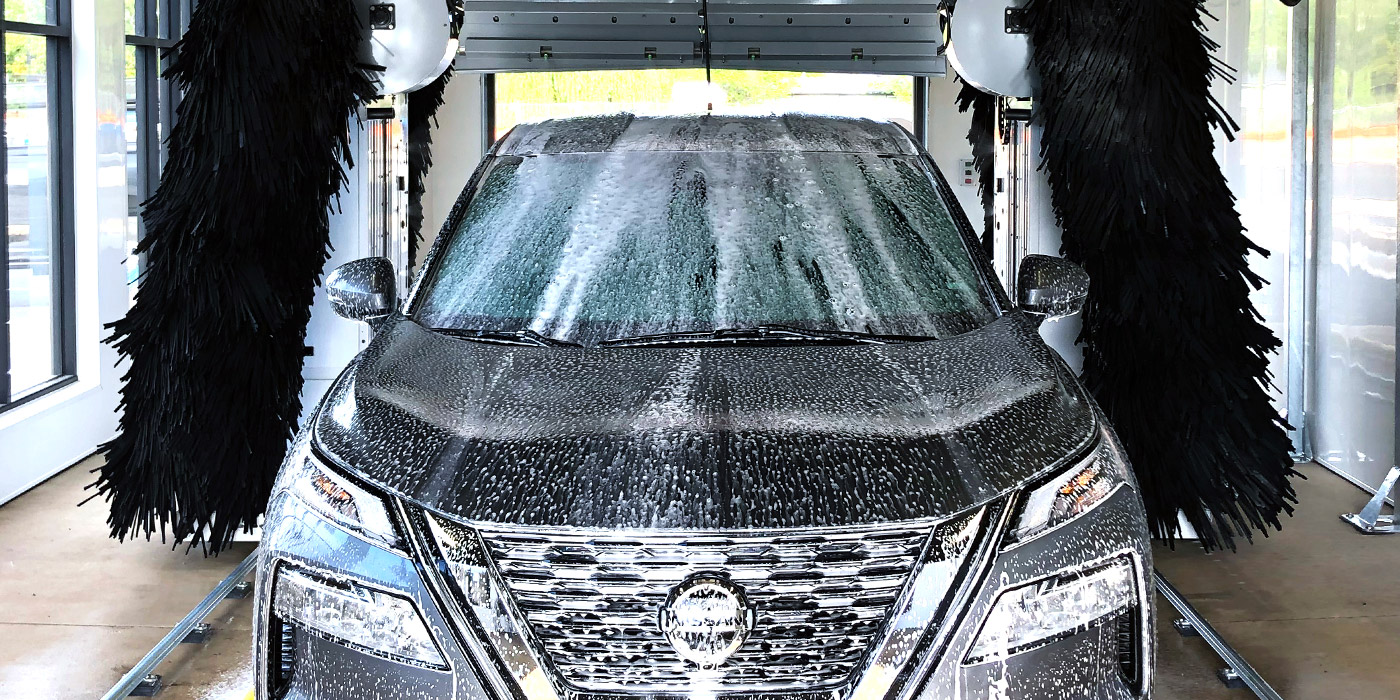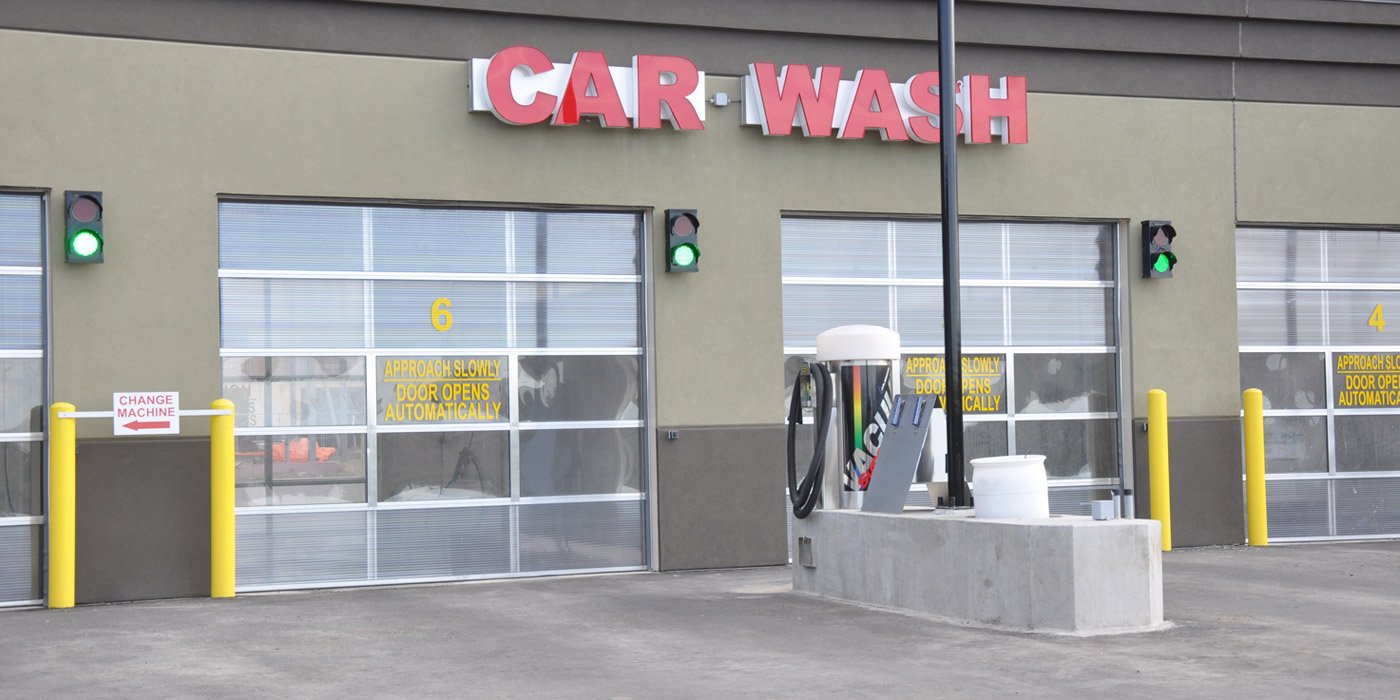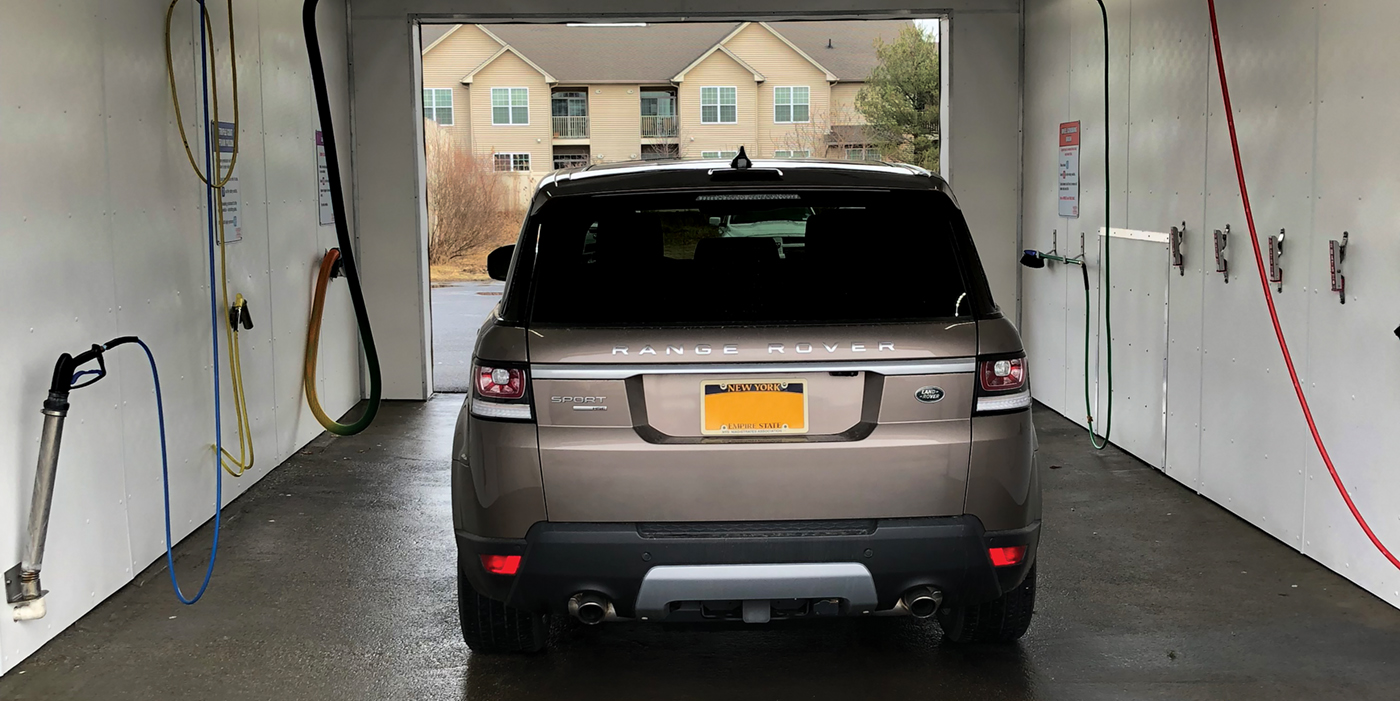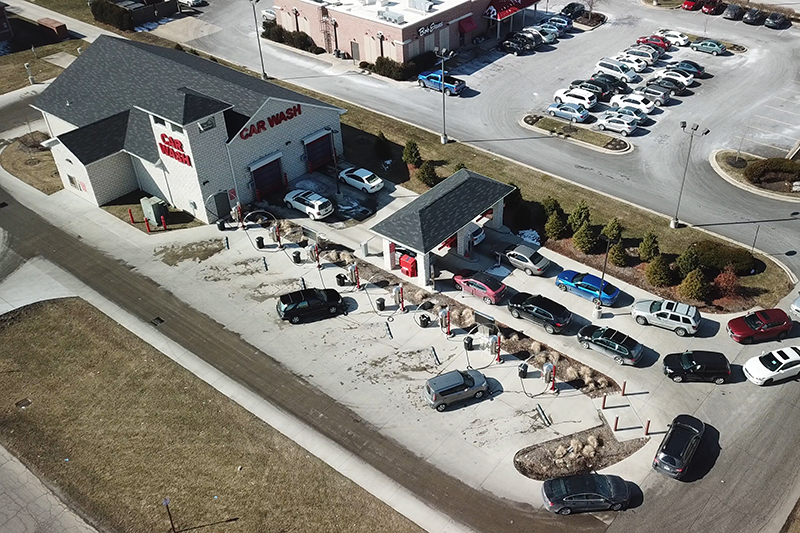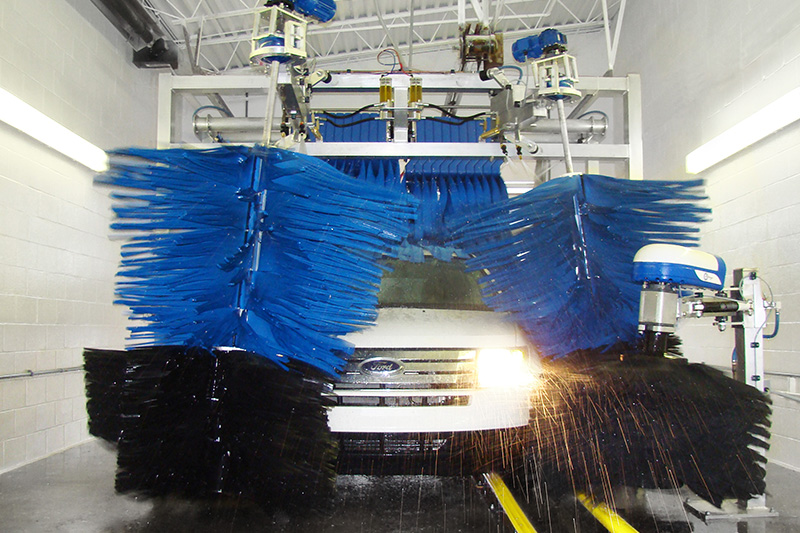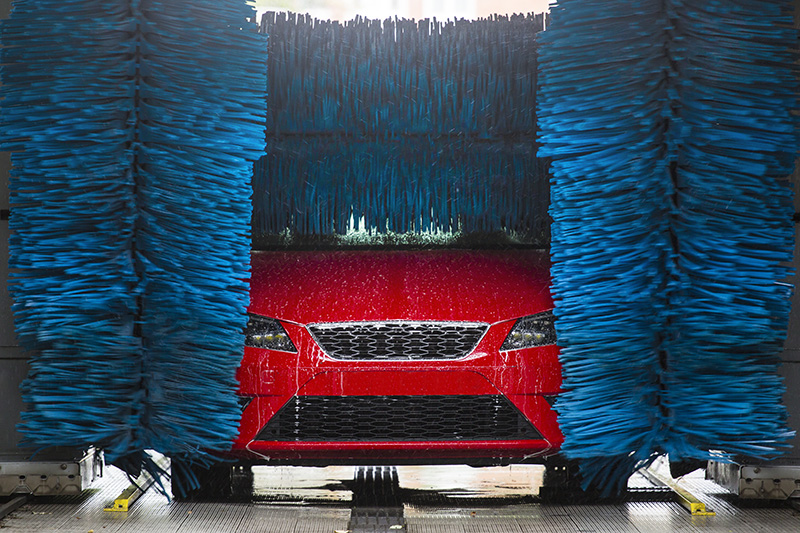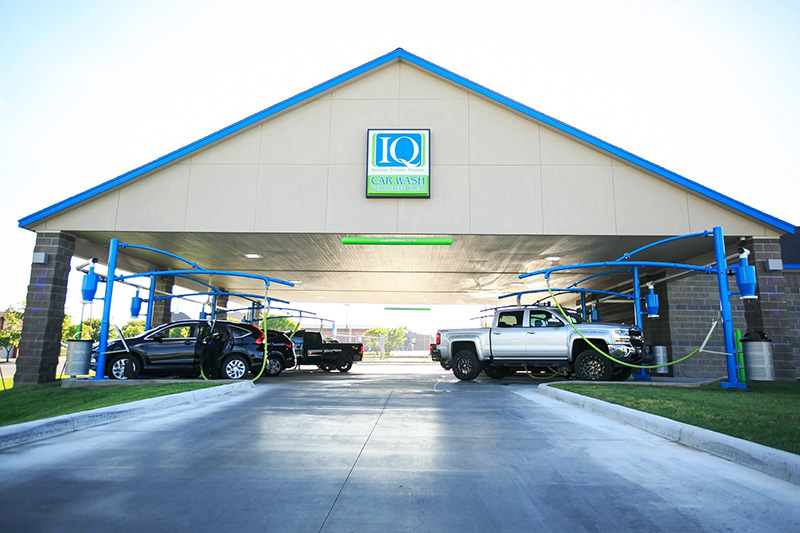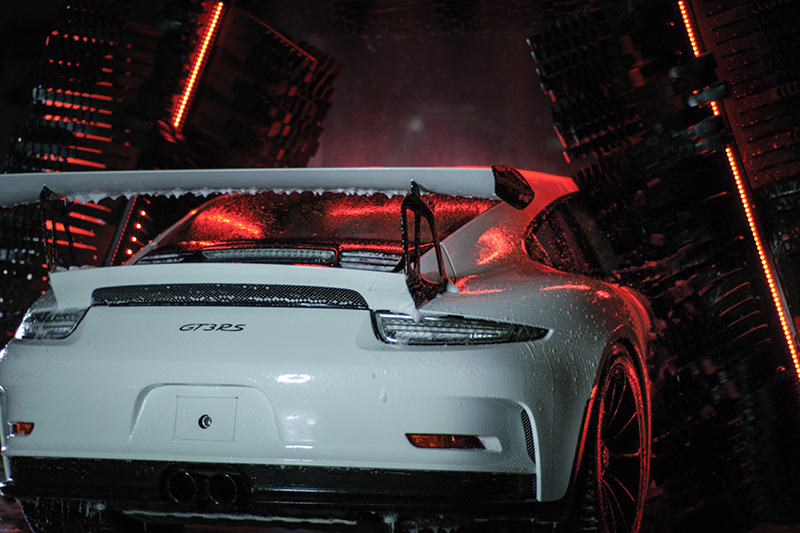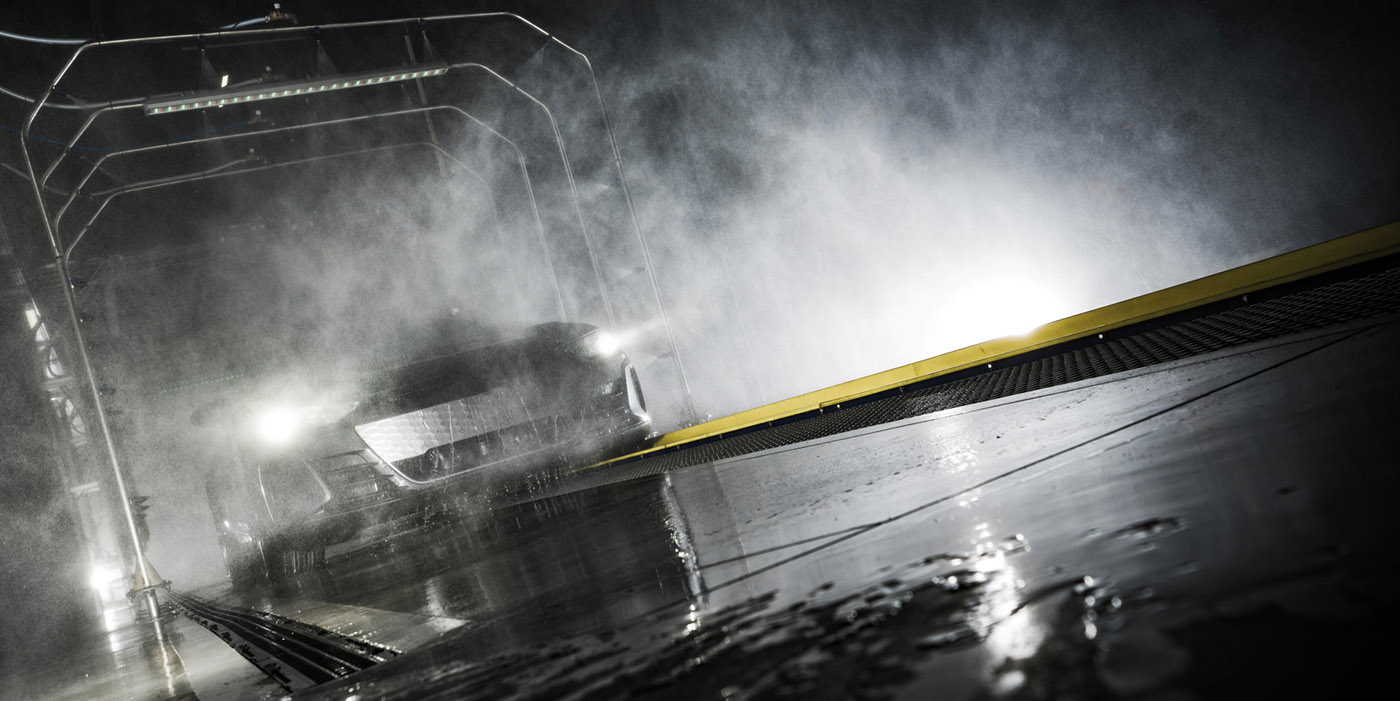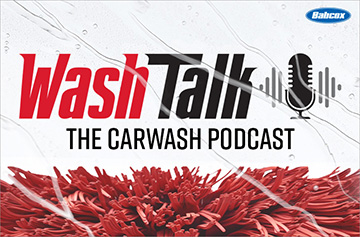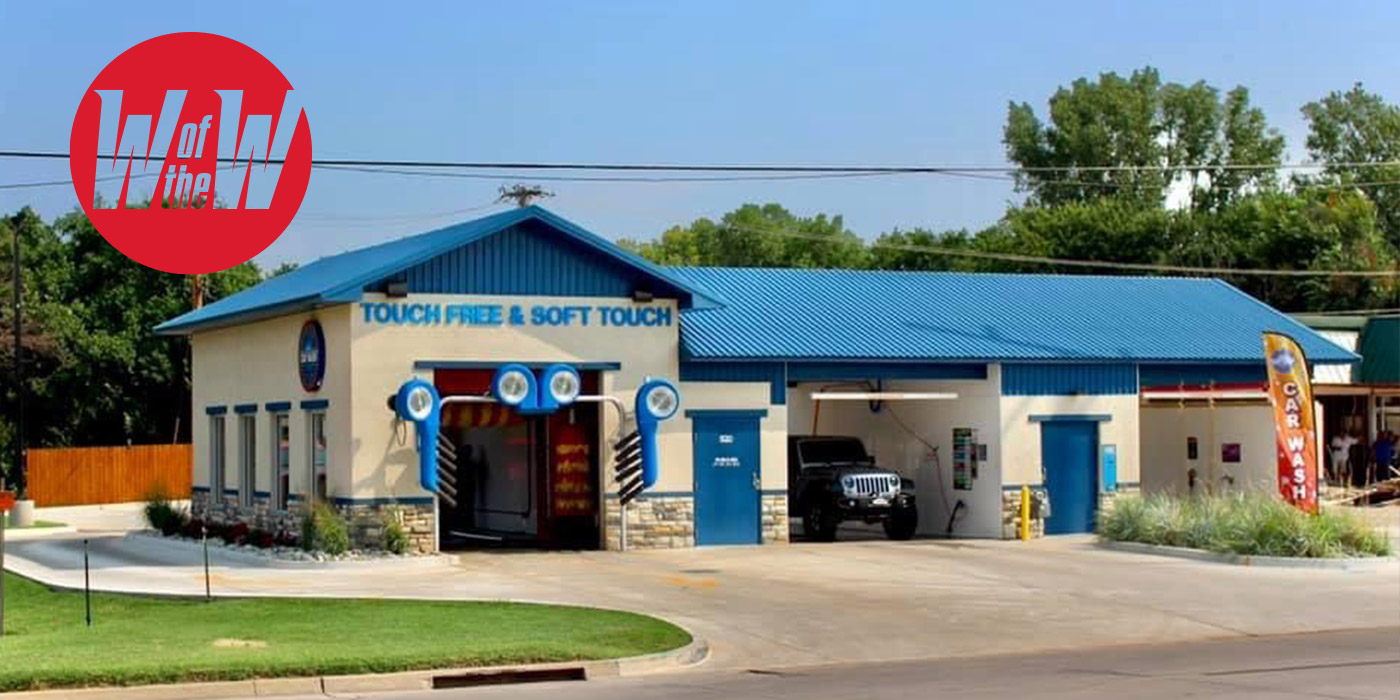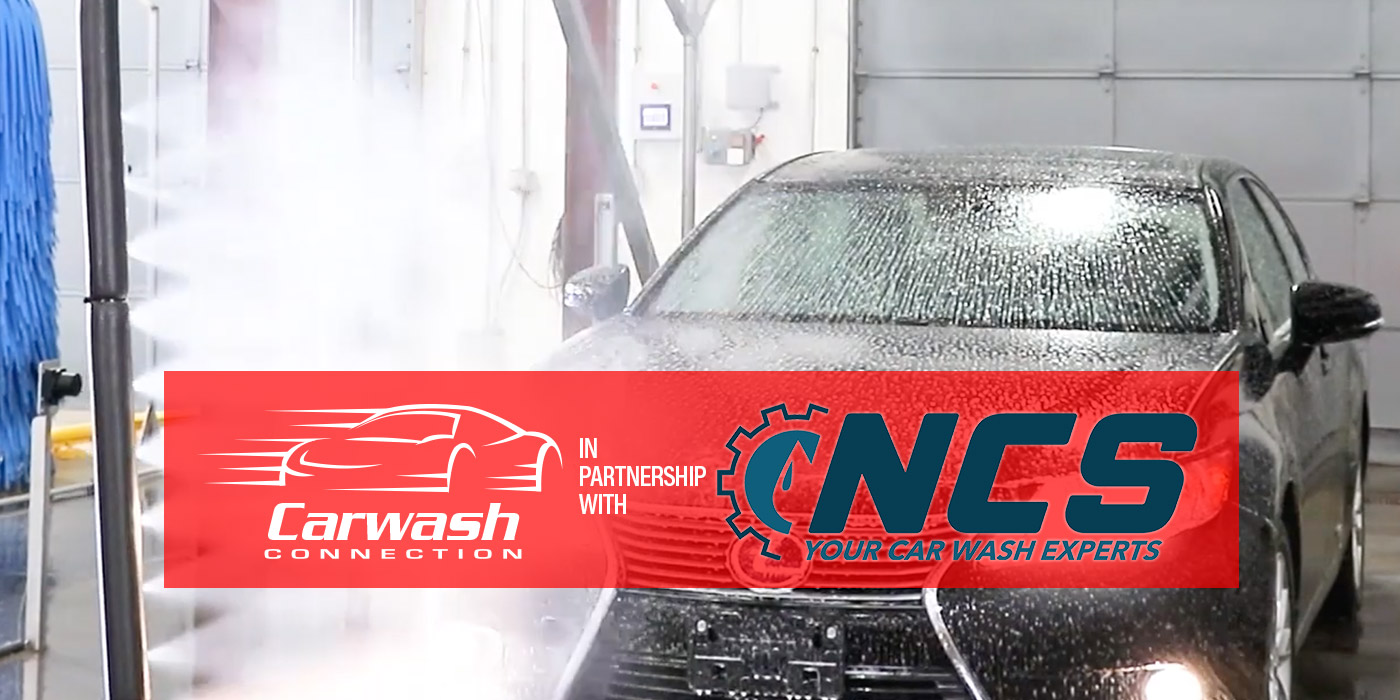Following carwash trends through the decades can help operators, distributors and other industry professionals understand the market’s past and sometimes provide hints about its future. Touch-free washing is one business segment that has definitely experienced fluctuation over the years. Still, touch-free equipment remains a go-to option for a dedicated segment of carwash customers for a number of reasons.
Though some in the industry were worried that the trend of fewer new in-bay locations would lead to less development for touchless equipment technologies, some additional features are now available. New “show” wash options, including tri-color and lava treatments as well as other chemistry upgrades, now help touch-free washes attract more customers and ensure the equipment generates better wash results. Today, perfecting a touchless wash’s chemistry application and sticking to a strict maintenance schedule have become more important than ever.
Chemistry considerations
Since no wash media touches vehicle surfaces, the results provided by a touch-free carwash solely depend on the chemicals that are applied, according to Ian Burton, North American director of sales for Istobal. Over the past few years, some chemical companies have even built their businesses on this wash format because touch-free washes are so dependent on chemistry to properly clean vehicles.
“People think it’s the high-pressure water or the touch-free carwash equipment that cleans the car. It is not — it’s the chemicals,” Burton explains. “Touch-free washes have gotten better over the years because the chemical companies have designed better, more organic products that have made cars come out cleaner.”
The chemical mixture selected for a wash will be decided by both the type of chemistry used as well as the wash’s geographical location. The first consideration is whether an operator wants to utilize a one-step or two-step chemical, Burton notes. With a two-step chemical, an acid is applied first, and that is what gets underneath the dirt and cleans the surface. The second step is a neutralizer application that neutralizes the first step’s acidity.
Burton states that some touchless locations prefer a single-step chemical application to save wash time. In this instance, the only chemistry applied is the acidic cleaner. Most equipment manufacturers now offer operators the ability to use either a two-step chemical or a single-step option.
For geographical considerations, the chemicals selected for Corpus Christie, Texas, in the middle of the summer, as an example, are going to be stronger than what an owner will use in Rhode Island during winter. Also, what is effective in Seattle will differ from what works in southern Louisiana during love bug season, Burton notes. The chemical selected will depend on weather conditions and the soils and contaminants common in the wash’s geographical location.
“The owner should work with the distributor,” Burton says. “The distributor will come in, and they will tell you what the hardness of the water is; they will work it out whether you’re using reclaim or a reverse osmosis system. There are so many factors involved in the type of chemistry that is being used. It’s extremely complicated.”
Putting on a show
Overall, say experts, touch-free technology has not improved when it comes to chemical application, but new systems do offer the option to add different types of chemical treatments. Today, both triple-foam and lava-style chemistry can be added to touchless sites, Burton reveals. The practical results provided by these new options can depend on the chemical distributor or what a customer wants. Some chemical companies use the triple-color or lava foam as a wax protectant, and some choose to make the foaming chemical or soap purely a show with no added benefits.
One advantage for the site operator is that the added chemical show will cost a minimal amount of money to produce, but a wash will be able to charge more when adding it. “You’re able to get a little bit more revenue out of that, and for touch-free technologies, it’s all about the show,” Burton explains.
Kipp Kofsky, president of Arcadian Services LLC, agrees that newer carwash chemistry, including lava chemicals and highly scented, colored products, have added new value for carwashes. This chemistry plus the introduction of new application equipment has definitely enhanced the show produced in the typical carwash.
Here, customer demand has been the main driving force for developing new chemical products, Kofsky continues. When an operator sees a need in a carwash, he or she can rely on the chemical manufacturer to help meet it. Though a new product can take time and investment, having an operator with a specific need can help speed the chemical development process along. After all of the lab testing is complete, and with the right relationship, that customer can even become a testing ground for a new product being developed.
Maintenance and equipment trends
Touch-free in-bay systems are highly mechanical, according to Burton, and as such, these machines require regular attention. The recommendation is to have the distributor’s local service representative on-site once a month.
Though the preventative maintenance check should occur once a month, maintenance requirements can change depending on the amount of washes the system is performing. “If it’s not performing a lot of wash cycles, the service reps don’t typically need to be there once a month,” Burton notes. “Every certain amount of washes, you should have somebody there. Typically, the distributor that is adding the soap is the company that does the service on the machine as well.”
General equipment trends for touchless washes focus on the improved chemicals and better wash reportage. Burton states that the wash speed of touch-free systems improved with the introduction of upgraded chemicals. Also, operators are now able to remotely download wash information from the equipment. This information can even be accessed using the owner’s cellphone.
Some companies have also decided to take the wash equipment off the bay floor. This design offers a clean floor compared to other equipment that includes a rail for the wash system. Burton notes that the gantry-style machines that run up and down a floor rail can provide faster wash speeds. These systems can wash and rinse a vehicle using a single pass compared to washes that hang on a gantry with a single inverted-L arm. Instead, the single arm has to go around both sides of the vehicle to complete the wash and rinse.
Some operators feel there is better wash control on a rail system while others prefer a completely clear bay floor. “The choice purely depends upon the site operator and what their customers feel comfortable with,” Burton says.
Touch-free versus express
Returning to historical wash trends, no one is surprised to note that modern express tunnels have become the biggest competition for in-bay automatic washes. There are multiple considerations that must be taken into account when comparing the wash formats.
These considerations can include:
- Equipment investment costs
- Wash cycle speeds
- Chemistry and water usage.
Typically, in-bay systems offer a lower investment cost compared to express tunnels, especially for wash sites where traffic may not be enough to generate adequate business, according to Burton. This low investment cost was a positive factor for gas stations and c-stores, as those businesses are geared towards customers buying gas, soda and chips, and then hopefully adding on a carwash.
Burton notes that touch-free carwashes have a higher operational cost per vehicle compared to express locations. The cost per vehicle is higher because the equipment uses more chemistry. As more water is required during the wash cycle as well, water costs are more expensive too.
Related: Soft cloth versus touch-free
When it comes to wash speed, some of today’s in-bay automatic technology can compete with express mini tunnels. That said, certain in-bay automatics are limited on the amount of washes that can be completed since the vehicles have to come to a complete stop. The vehicle drives in, the wash cycles around it, and then the customer has to drive out before the next vehicle can enter. While an in-bay system can wash an average of 20 to 25 vehicles an hour, an express mini tunnel can wash 50 vehicles an hour, depending upon the length of the tunnel, Burton states.
One benefit an operator gets with an express tunnel is that it is geared towards a high volume of traffic. If a wash site has a high traffic volume with good visibility and is near retail outlets, the business will actually need a higher volume of customers, according to Burton. This volume is necessary to offset the extra costs that the express mini tunnel equipment — as well as real estate prices or considerations — are going to require of a business.
“The express mini tunnel versus the in-bay automatic business is purely dependent upon volume of customers,” Burton concludes. “If you’ve got an extremely high volume of customers, an express tunnel is probably the route to go.”
Mark Martin is a freelance contributor.

